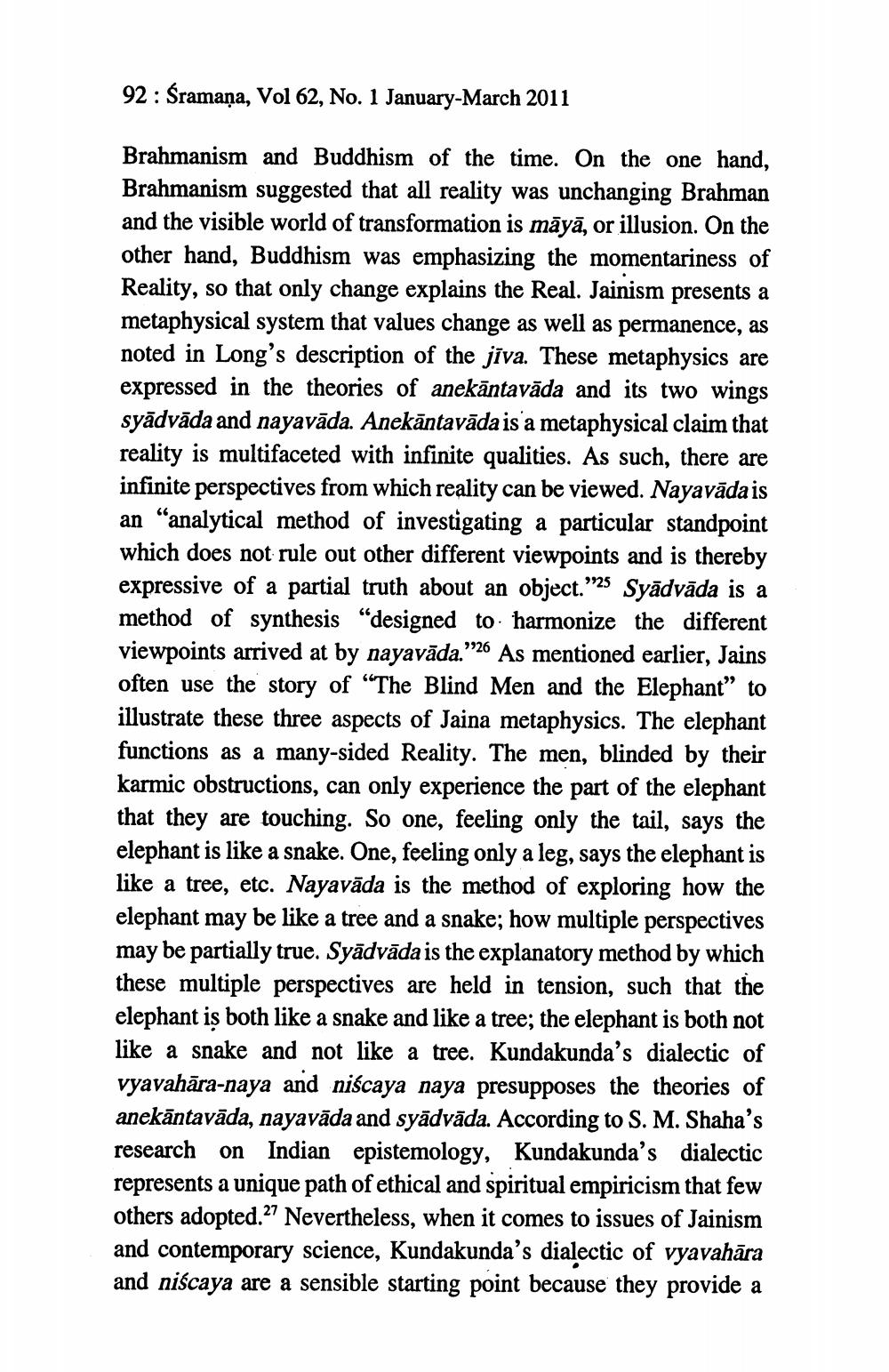________________
92 : Śramaņa, Vol 62, No. 1 January-March 2011
Brahmanism and Buddhism of the time. On the one hand, Brahmanism suggested that all reality was unchanging Brahman and the visible world of transformation is māyā, or illusion. On the other hand, Buddhism was emphasizing the momentariness of Reality, so that only change explains the Real. Jainism presents a metaphysical system that values change as well as permanence, as noted in Long's description of the jiva. These metaphysics are expressed in the theories of anekāntavāda and its two wings syādvāda and nayavāda. Anekāntavāda is a metaphysical claim that reality is multifaceted with infinite qualities. As such, there are infinite perspectives from which reality can be viewed. Nayavādais an "analytical method of investigating a particular standpoint which does not rule out other different viewpoints and is thereby expressive of a partial truth about an object."25 Syādvāda is a method of synthesis "designed to harmonize the different viewpoints arrived at by nayavāda.”26 As mentioned earlier, Jains often use the story of “The Blind Men and the Elephant” to illustrate these three aspects of Jaina metaphysics. The elephant functions as a many-sided Reality. The men, blinded by their karmic obstructions, can only experience the part of the elephant that they are touching. So one, feeling only the tail, says the elephant is like a snake. One, feeling only a leg, says the elephant is like a tree, etc. Nayavāda is the method of exploring how the elephant may be like a tree and a snake; how multiple perspectives may be partially true. Syādvāda is the explanatory method by which these multiple perspectives are held in tension, such that the elephant is both like a snake and like a tree; the elephant is both not like a snake and not like a tree. Kundakunda’s dialectic of vyavahāra-naya and niscaya naya presupposes the theories of anekāntavāda, nayavāda and syādvāda. According to S. M. Shaha's research on Indian epistemology, Kundakunda's dialectic represents a unique path of ethical and spiritual empiricism that few others adopted.?? Nevertheless, when it comes to issues of Jainism and contemporary science, Kundakunda's dialectic of vyavahāra and niscaya are a sensible starting point because they provide a




